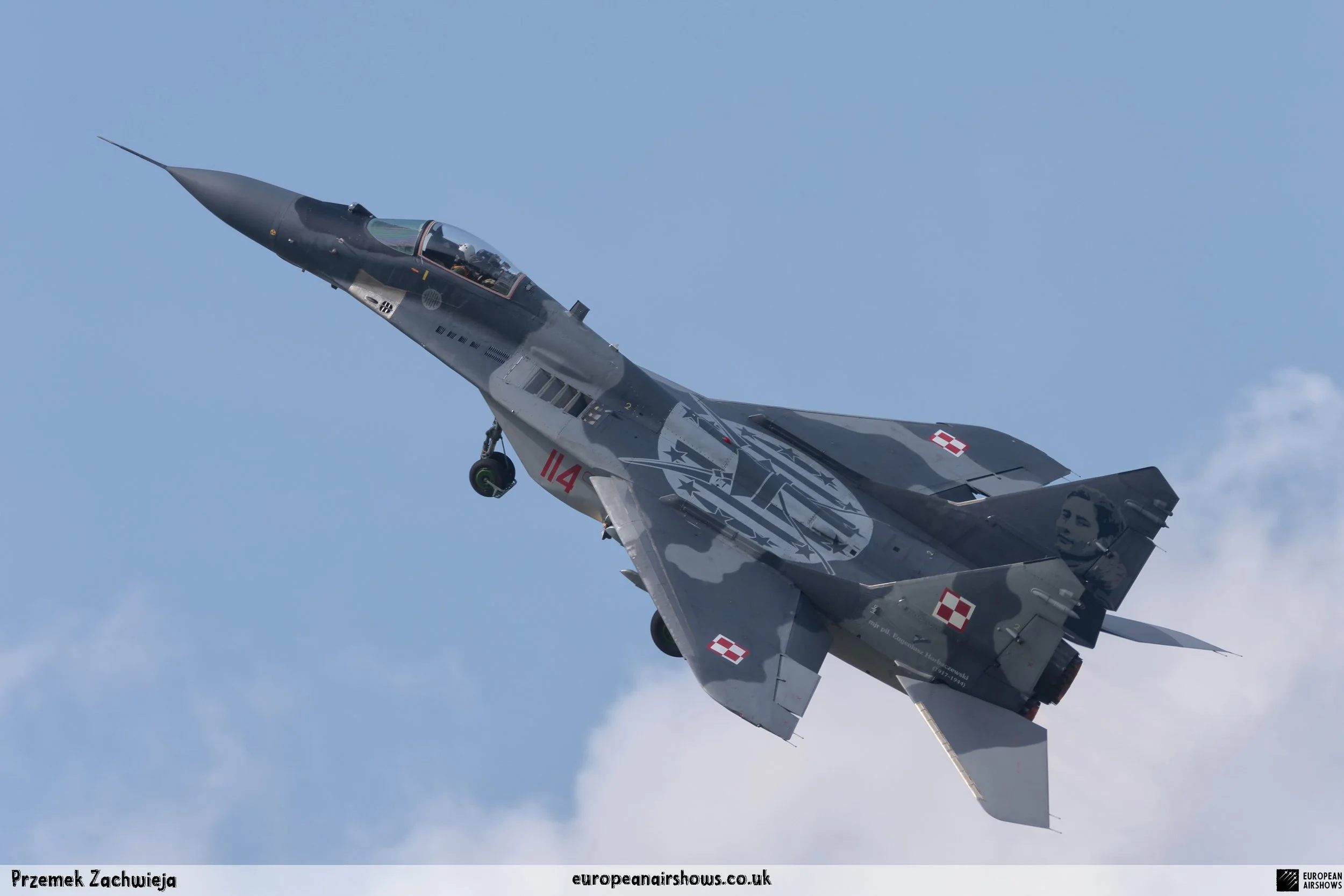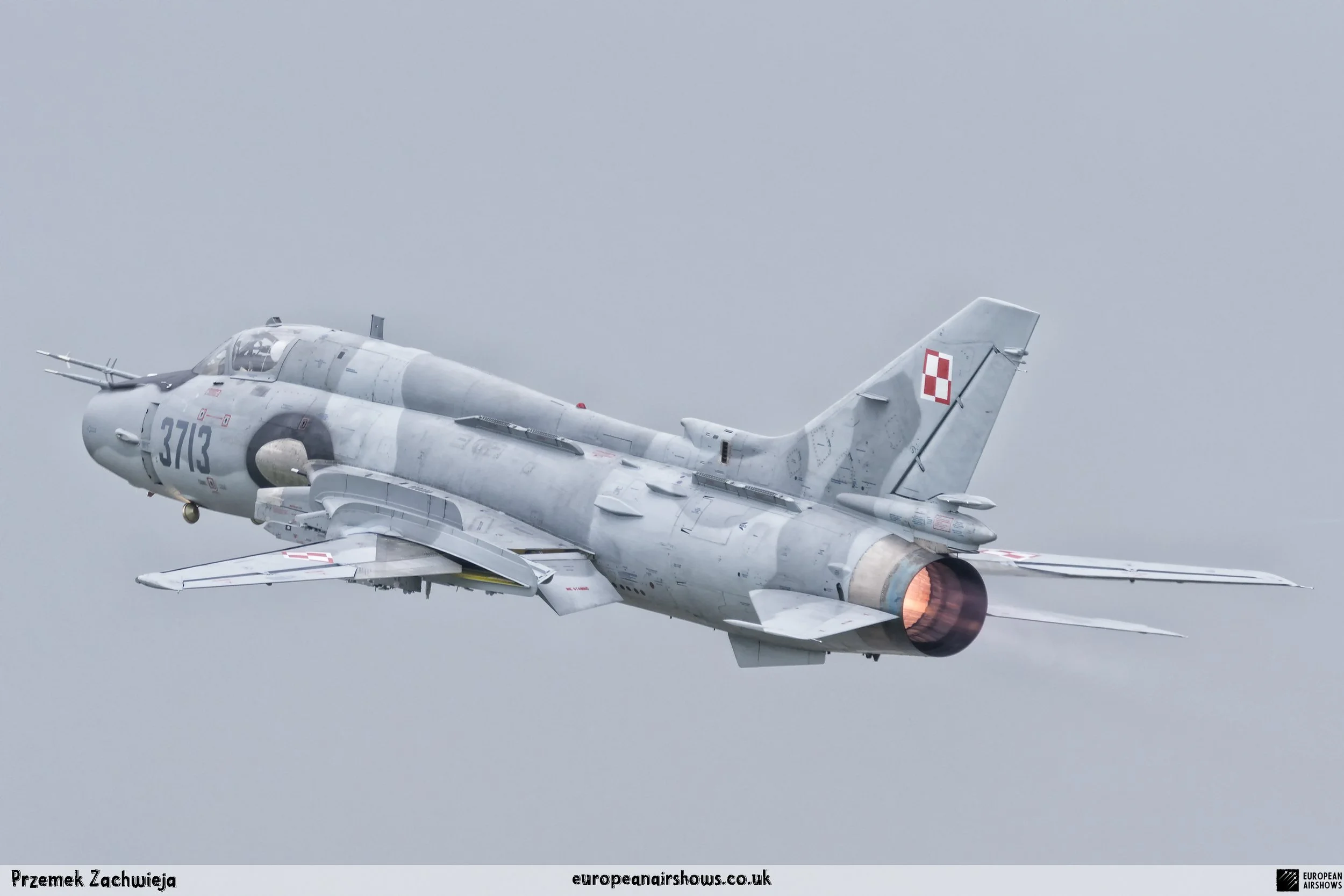Poland to retire Su-22s by end of 2024 and MiG-29s by end of 2026
In a recent interview, Brig. Gen. Pil. Ireneusz Nowak, the Deputy Inspector of the Air Force in the General Command of the Polish Armed Forces, declared that Poland aims to retire its ageing Su-22 fighter bombers by the end of 2024 and its MiG-29 fighter jets by the end of 2026.
The decision to phase out these aircraft was made to modernize the country's air force fleet, which comprises a mixture of Soviet-era and Western-made planes. The Su-22 fighter bombers, which were first introduced in the 1970s, have been employed for ground attack missions and are no longer considered to be viable in modern warfare. Similarly, the MiG-29s, which were introduced in the 1980s, have been plagued by maintenance issues and necessitate costly upgrades to remain viable.
Polish MiG-29 leading the FA-50 at the Radom Airshow 2023
Brigadier General Pilot Ireneusz Nowak has expressed concern over Poland's continued use of Soviet-era aircraft, making it the only NATO country yet to upgrade to more advanced aircraft, in contrast to other countries in the alliance, such as the Czech Republic, Slovakia, and Hungary. This utilization of outdated technology poses a potential security risk and is a matter of concern. However, Poland is taking significant measures to address this issue. For instance, on January 31, 2020, Poland entered into a $4.6 billion agreement for 32 F-35A fighters. Furthermore, on July 28, 2022, KAI signed a contract with the Polish government for 12 FA-50 Block 10 (all delivered) and 36 FA-50PL Block 20.
Bulgaria is the only other country within the alliance still using Soviet-era aircraft MiG-29. However, due to delays in receiving F-16s, Bulgaria had to reactivate its MiG-29 fleet with Poland's assistance. This situation underscores the importance of modernizing military technology to avoid relying too heavily on outdated equipment.
The MiG-29 aircraft currently in use in Poland are outdated and have been in service for a considerable period. Therefore, modernization of these aircraft is not a viable option. Although one squadron of 14 planes underwent modernization, the upgrade was limited to their communications and avionics systems to enable these planes to perform their duties within the NATO air defence system.
It is worth noting that during the modernization process, the engines and weapons systems of the planes were not upgraded. However, the updated avionics and communication systems have enhanced the squadron's ability to carry out its responsibilities in the NATO air defence system.
Despite their age and limitations, these aircraft will continue to serve until their service life ends in 2026. Afterwards, they will be retired and replaced with more modern aircraft. Until then, the Polish Air Force expects them to continue providing valuable service and contributing to the country's defence capabilities.
Formation of three Polish Air Force Su-22 at the Radom Airshow 2023
The Su-22 planes currently in use will continue to operate until the end of 2024, which has been designated as their final year of usage. The military authorities have already selected most of the pilots eligible for F/A-50 training. These pilots will be sent to South Korea later this year for training.
A total of 24 pilots have been selected for a training program divided into three groups, each consisting of eight pilots. The training will cover various aspects of operating the F/A-50 light combat jets, including aircraft systems, avionics, weapons, and tactics. Once training is complete, the pilots will return to Poland and be responsible for operating the F/A-50 jet.
Swidwin Air Base, which was previously a station for Su-22 planes, is undergoing significant renovations to improve its infrastructure. As part of the upgrade, the runway is temporarily closed to allow for the construction of a new, longer runway that can handle larger and more advanced aircraft. The renovation process also involves the building of new hangars, workshops, and other necessary facilities to support the new-generation aircraft.
As part of the ongoing renovation process, the Su-22 aircraft stationed at Swidwin Air Base have been moved to other military bases in the country. The renovation work is being carried out by a team of skilled engineers, construction workers, and military personnel who are working tirelessly to ensure that the project is completed within the given time frame and budget.
This renovation project aims to modernize and upgrade the Swidwin Air Base into a state-of-the-art facility that can house future F/A-50 and F-35 planes. These aircraft are widely regarded as some of the most advanced fighter planes worldwide, and the upgrade of the Swidwin Air Base is expected to enhance the country's air defence capabilities significantly.
Mikoyan MiG-29 Fulcrum
The Mikoyan MiG-29, also known as "Fulcrum" by NATO, is a twin-engine fighter aircraft designed and developed by the Mikoyan Design Bureau in the Soviet Union during the 1970s. Its primary purpose was to serve as an air superiority fighter to counter the increasing threat posed by new US fighters such as the McDonnell Douglas F-15 Eagle and the General Dynamics F-16 Fighting Falcon. The MiG-29 entered service with the Soviet Air Forces in 1983.
Originally designed as an air-to-air combat fighter, the MiG-29 has since been adapted for multirole purposes, capable of performing a variety of operations. Many variants of the aircraft have been manufactured, including the multirole Mikoyan MiG-29M and the navalised Mikoyan MiG-29K. The most advanced version to date is the Mikoyan MiG-35. These newer models come with improved engines, glass cockpits featuring HOTAS-compatible flight controls, modern radar and infrared search and track (IRST) sensors, and significantly increased fuel capacity. Some aircraft have also been equipped with aerial refuelling capabilities.
Since the dissolution of the Soviet Union, many ex-Soviet republics have continued to operate the MiG-29, with the Russian Aerospace Forces being the largest operator. The Russian Aerospace Forces have sought to upgrade their existing fleet to the modernised MiG-29SMT configuration; however, financial constraints have limited deliveries. The MiG-29 has also been a popular export aircraft, with over 30 nations either currently operating or having operated the aircraft.
As of 2024, Flight Global estimates that there are 809 MiG-29s of all types in service with air forces, making it the fifth most common active fighter. The aircraft has also been furnished with a range of air-to-surface armaments and precision munitions, which has made it a formidable weapon in modern warfare. Its advanced technical capabilities, coupled with its long history of service, make the Mikoyan MiG-29 a highly respected fighter aircraft.
Sukhoi Su-22 Fitter
The Su-22, which was given the NATO codename "Fitter", is a variable-geometry attack aircraft that played a significant role in the Cold War era. The first prototype of the aircraft, called Su-17, took to the air in 1966, and it was later designated as Su-22 for export purposes. The Su-17/20/22 series was produced for a long time, from 1967 to 1990, and it was operated by many air forces across the globe.
The Su-22 was considered one of the mainstays of the Warsaw Pact's strike forces and was feared by many of its opponents. It was primarily designed for ground attack missions, but it was also capable of carrying nuclear weapons. Despite its nuclear capabilities, the aircraft was mostly used for conventional missions such as close-air support, interdiction, and air defence suppression.
The Su-22 was operated by various air forces, including the Soviet Union, which was the primary user of the aircraft. It was also used by other former Soviet republics, former Warsaw Pact countries, and countries in the Arab world, such as Angola and Peru. The Russian Federation retired its fleet of Su-22s in 1998, but the aircraft continued to serve in several other countries for many years.














